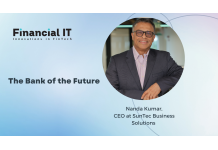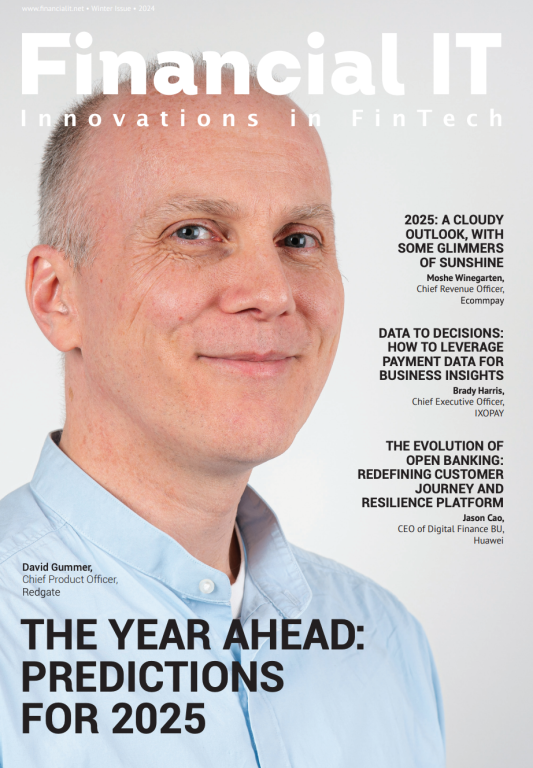Banking – This Time It’s Personal

- David Rosen, Technology and Customer Leader at TIBCO
- 24.08.2022 05:15 pm #banking
The retail banking sector, and society as a whole, face the challenge of low levels of financial literacy among consumers. So many of the most important decisions we make concerning how much money we are making, spending and saving are taken with little expertise or guidance. In fact, there’s an irrational hesitancy to talk to anybody when it comes to money.
Our financial institutions create barriers of their own as most are segmented and siloed. Banking can be a disparate industry with student loans, auto loans, pension and retirement plans all coming from the same institution but managed in isolation. Combine this with customer reticence and banks have a real challenge on their hands. Take consumer unwillingness to explore and listen to advise, and wrap that up with a financial system that is so poorly integrated, and it becomes hard to bring about any kind of personalisation of banking services.
Many institutions aspire to move in the direction of greater personalisation, even hyper-personalisation, where they are having relevant, timely conversations with customers across multiple channels. In the perfect scenario, they would have the ability to know at every touchpoint and regardless of channel what the customer has done previously in a different channel, and leverage that knowledge to enrich the conversation and deepen the relationship. Hyper-personalisation can help a bank tap into latent needs that the customer was perhaps unaware of. At the very least it can help a bank to meet that customer’s financial goals, introduce them to a much greater range of products and strengthen their overall financial situation. It offers a way for banks to differentiate their brand, boost revenues, augment the customer experience and improve financial inclusion.
The move to hyper-personalisation can start by breaking down customers into groups with similar goals. Life stages are a huge aspect of financial relationships. What are customers saving for given their stage of life, how old are their family members, and where are they from a retirement standpoint? Building a relationship with people is about feeding off cues and clues that say where people are on their journey. Has a bonus been paid? Do patterns of credit card spending indicate a change in family circumstances, such as the birth of a child? It is useful to examine the connectivity of behaviours across channels. This can offer a fantastic opportunity to proactively engage with the customer.
In a highly digitalised society such as Singapore, your bank will know about your physical location, your past behaviour patterns, and your circumstances. They will see that you’re at a particular store or an ATM, and be in a position to create and send a highly personalised message, perhaps on the screen of the ATM. “Happy Birthday to your wife. We are running a special offer at this nearby store if you are looking for a gift”.
There’s of course the risk of over-intimacy. Where is the boundary between appropriate use of insight and people’s comfort? The element of discomfort with finance makes that a wider chasm to bridge. It's interesting what we will trust. We’ll follow Google anywhere – turn left, turn right. But with something more consequential, like a pension or savings, we become a lot more sensitive.
So how can something approach a Singaporean level of personalisation be brought about? What will break down people’s natural financial reticence? What will give them feelings of comfort and control?
Open Banking is an important piece of this jigsaw. It may be the transitional point that allows us to become more comfortable with technology and lets us take advantage of better guidance.
Open Banking in theory solves the issue of disaggregated and siloed value chains. It adds intelligence on top to a customer’s use of money and savings and in so doing is perhaps the transitional point that allows us to become more comfortable with finance. Breaking down siloes of information ties together the value chain naturally and develops the customer journey in incremental ways. Small wins start to build trust and comfort.
Of course among institutions, there’s a huge gap between the laggards and the leaders. Laggards are still harming the customer experience by passing customers around from place to place, repeating their identifying personal details at each stage.
The leaders are moving towards allowing customers to self-serve with greater efficiency by providing them with much the same information as a bank teller or broker would have on their screen. AI-driven tools are enabling this, making the personalisation of banking much more effective. Banks are learning to be as effective in this respect as retailers have been for years. We used to be a bit freaked out that a retailer knew so much about us. Now we expect it. I assume my local Adidas store will understand my footwear purchase patterns.
Without connectivity, of course, you can’t do any of this, whether we’re talking about API-led integration or event management. Relevant information must be available in real-time and at scale.
Technology is not of much use without the ingredient of timing. The challenge for banks and insurers is not so much applying hyper-personalisation but how do you do it at the right speed so you can intercept, react, and respond? There’s been a lot of emphasis on analytics, AI and ML, which is great. But it’s all a bit of a moot point if you’re telling someone about an offer when they have already reacted to somebody else’s. It doesn’t really matter then how good the offer was once the moment has passed. This is an issue for banks that still operate siloes of information. Responsive, event-driven architecture is the best answer.
It’s also about the management of a huge amount of disparate data. We’re creating so much data, and we need to get to the point where that’s available as useful information, contextually. In the old days, you’d just create another data lake by bringing different bits of data to the same place. Now that data can be virtualised and patterns in it identified.
Harnessing this capability is KBTG, a subsidiary of Thailand-based K Bank. With the growth of digital banking, KBTG needed to find a much faster way to provide data for internal teams enabling mobile banking apps, so that it could compete with non-banking companies that offer more choices for digital banking that fit customer lifestyles. KBTG turned to data virtualisation software to improve its data delivery. The bank now leads the charge for digital lifestyle banking, where customers can perform all banking activities on a mobile device. With the implementation of data virtualisation, KBTG can now handle up to 10 million transactions per day, with the data virtualisation layer pulling from 20-30 downstream systems and 12-15 data sources.
As KBTG has demonstrated, the right technology can allow institutions to connect relevant information from a vast pool of data, unifying it so that disparate islands of data come together effectively, supporting personalisation and allowing for real-time actionable insights with every engagement.
If you combine the critical, intelligent thinking of good employees with the right tools and correct timing, you have incredible power, and retailers have proved this. Banks can do the same.


























